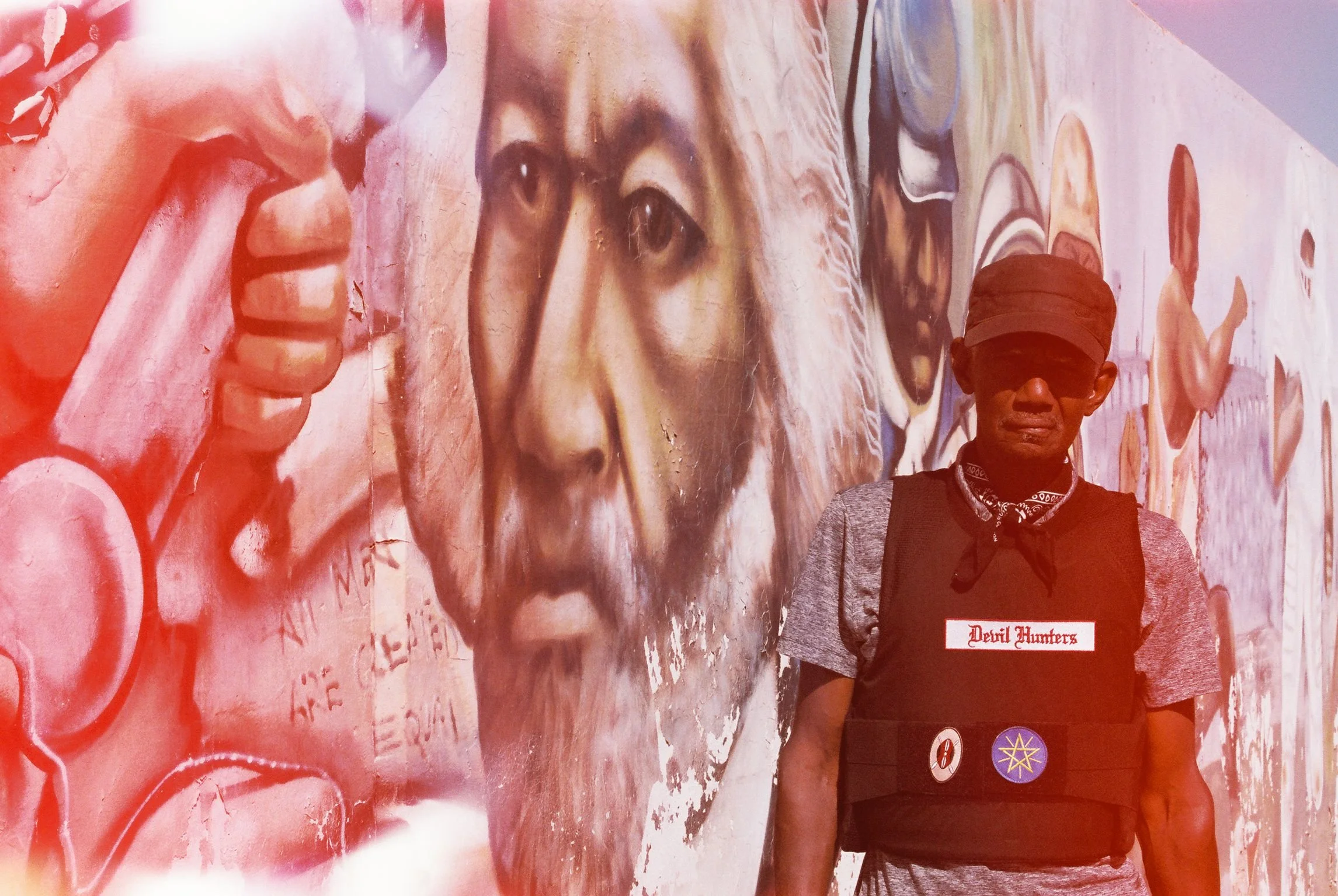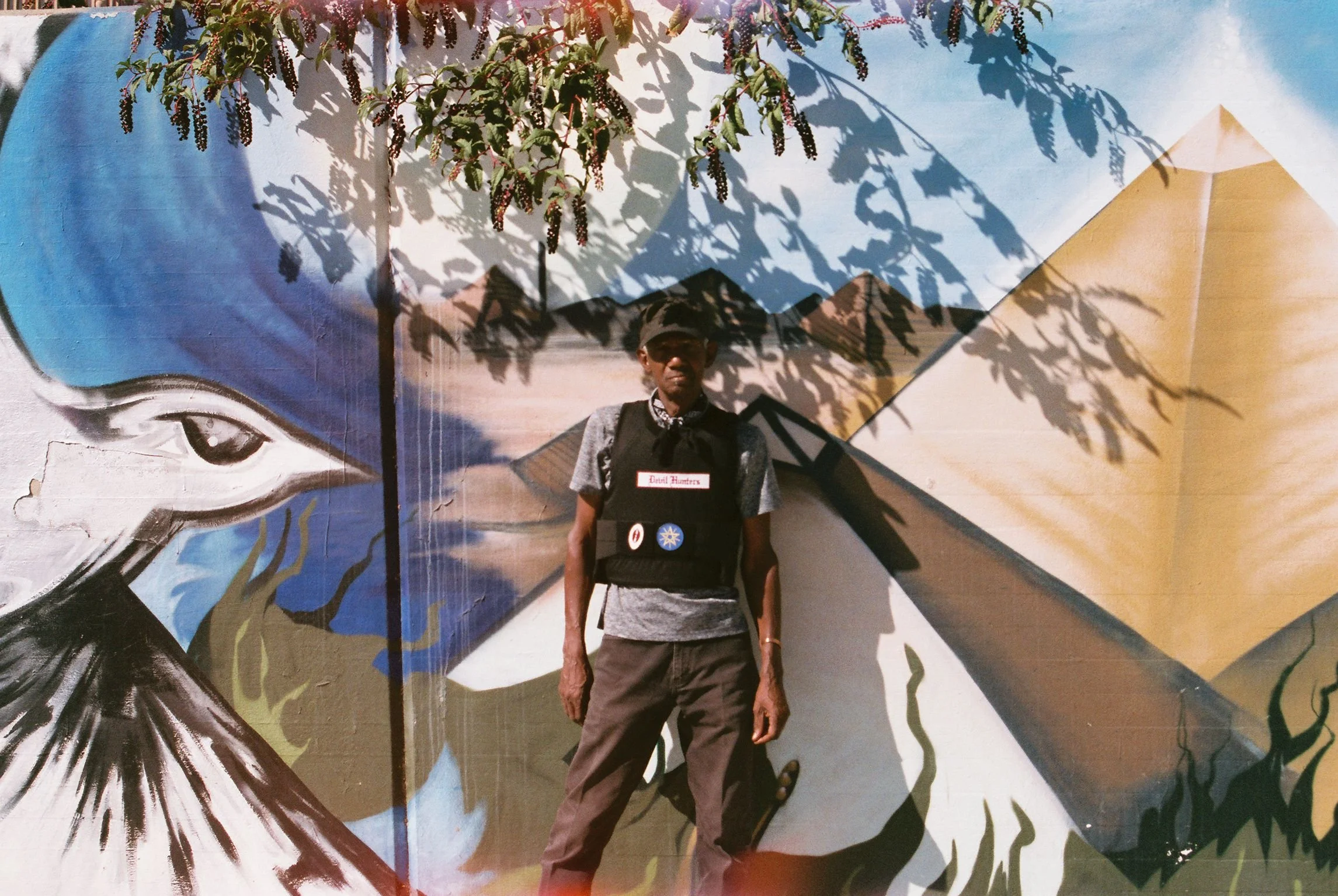Embodying Resistance: Reclaiming Sovereignty through Adornment
Joseph Mercier Sr. wearing the Devil Hunters armor captured by Alex Mercier
For our ancestors clothing always functioned as adornment; a means of expression, permeated with symbolism and infused with intention. Local materials embossed with deceptively uncomplicated patterns, shielded the silent echoes of experience. Each detail archived a memory. Presently, Black people maintain the creation of remarkable and profound garments. Clothing that both beautifies and acts in resistance to spiritual and political subjugation. Art that allows us to remember and simultaneously embody transcendence.
Every generation of Black Angelenos inherits the legacy and responsibility of communal preservation. As residents of Los Angeles, we have mirrored our ancestors' instinctual desire to cultivate conditions for collective sovereignty in many ways, few more culturally prominent than “gangs”. Originally formed as social groups by Black youth who were unable to participate in white extracurricular opportunities, these small communities functioned as chosen families with shared customs and traditions. In response to dehumanizing acts of violence by white terrorist organizations like the Ku Klux Klan and Spook Hunters, more Black youth groups formed to act as neighborhood defense. One such group was The Devil Hunters, an organization founded at the Aliso Village housing project in East Los Angeles.
Joseph Mercier Sr. captured by Alex Mercier
State sanctioned violence has not ceased in Los Angeles. The highly publicized assault of Rodney King in 1991 by LAPD is among thousands of undocumented emotionally and physically abusive interactions with police in the United States. Fear of police and other violent white intimidation groups is a common experience within Black communities. The exhaustion and pervading anxiety formed by frequent brutality and mass shooting cases inspired Alex Mercier to design protective adornment. As a Black man born and raised throughout Los Angeles County, an artist and co-owner of Equilibrium: Lifestyles in Balance, an intergenerational family business, Alex felt an intense sense of urgency to create a practical and utilitarian response. The result was a fully functional bullet proof vest with details that honor the rich history of resistance throughout the African diaspora.
Alex Mercier wearing the Devil Hunters armor
The vest incites a sense of confidence and security, allowing for a member of the community to stand in the way of violence being enacted on a more vulnerable person. His intentions were to minimize feelings of distress, as a result the garment supports the wearer maintaining a healthier nervous system. The back of the piece includes the embroidered image of a panther attacking a Ku Klux Klan member with the words “Los Angeles” in a bright red thread. An allusion to the Black Panthers’ power over the menacing tactics and ideologies of the Klan, the red lettering stands as a warning and reminder of collective strength. The front incorporates velcro where an array of African flag patches can be added, enabling the embodiment of ancestral wisdom within the repressive conditions of an authoritarian society.
Metaphorically, the creation of the piece also served as a reminder of the persistence required to see something through to completion. The length of time and the inevitable adjustments required to produce the garment, acted as a figurative representation of the deliberate energy that is necessary to attain even the smallest semblance of liberation. Alex created the vest as an offering to the Black community, a beacon that he hoped would inspire others to radically and artistically imagine a future grounded in Black sovereignty.





